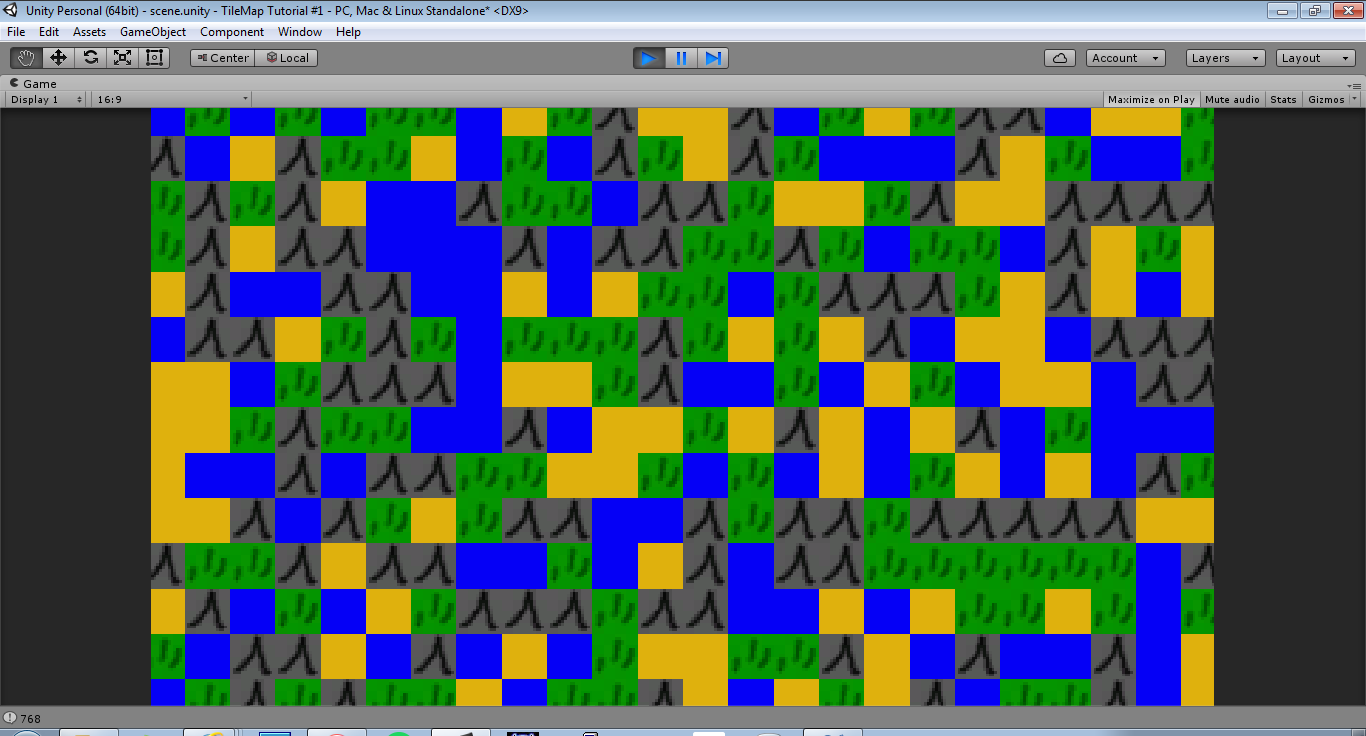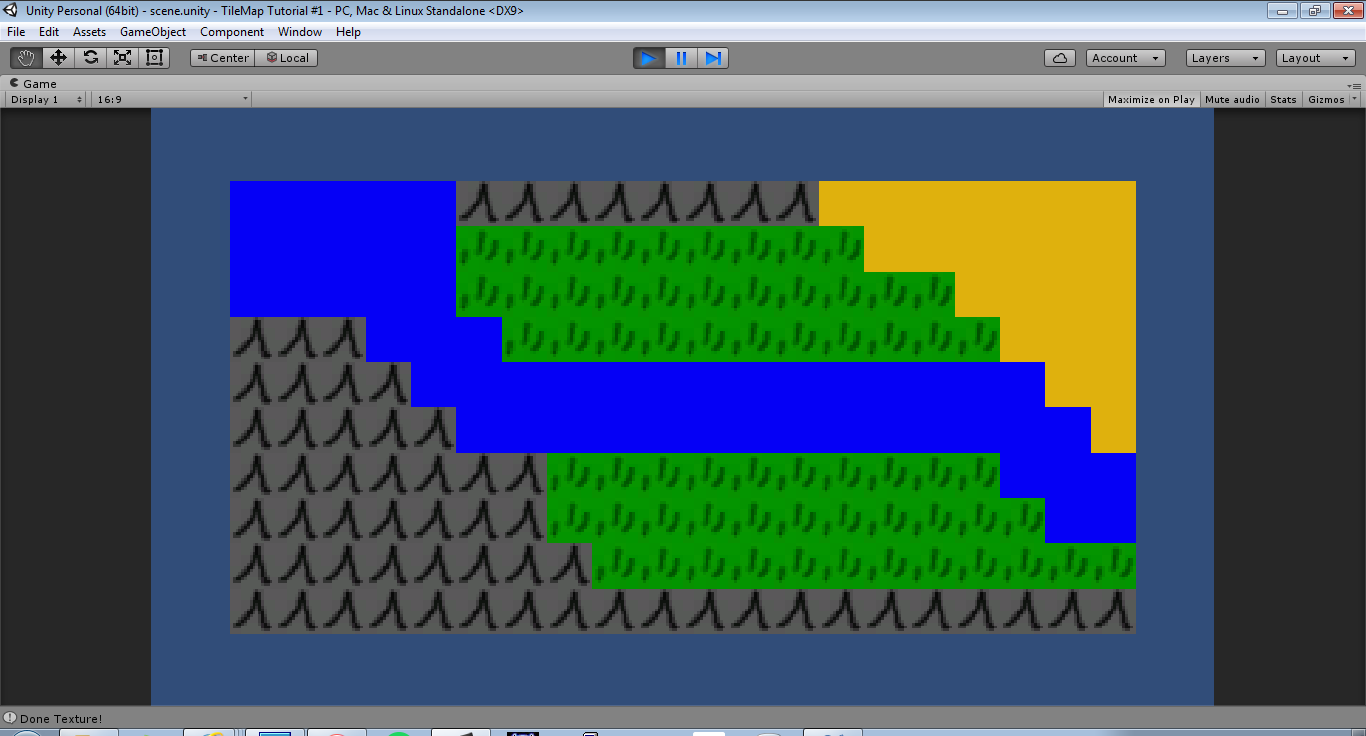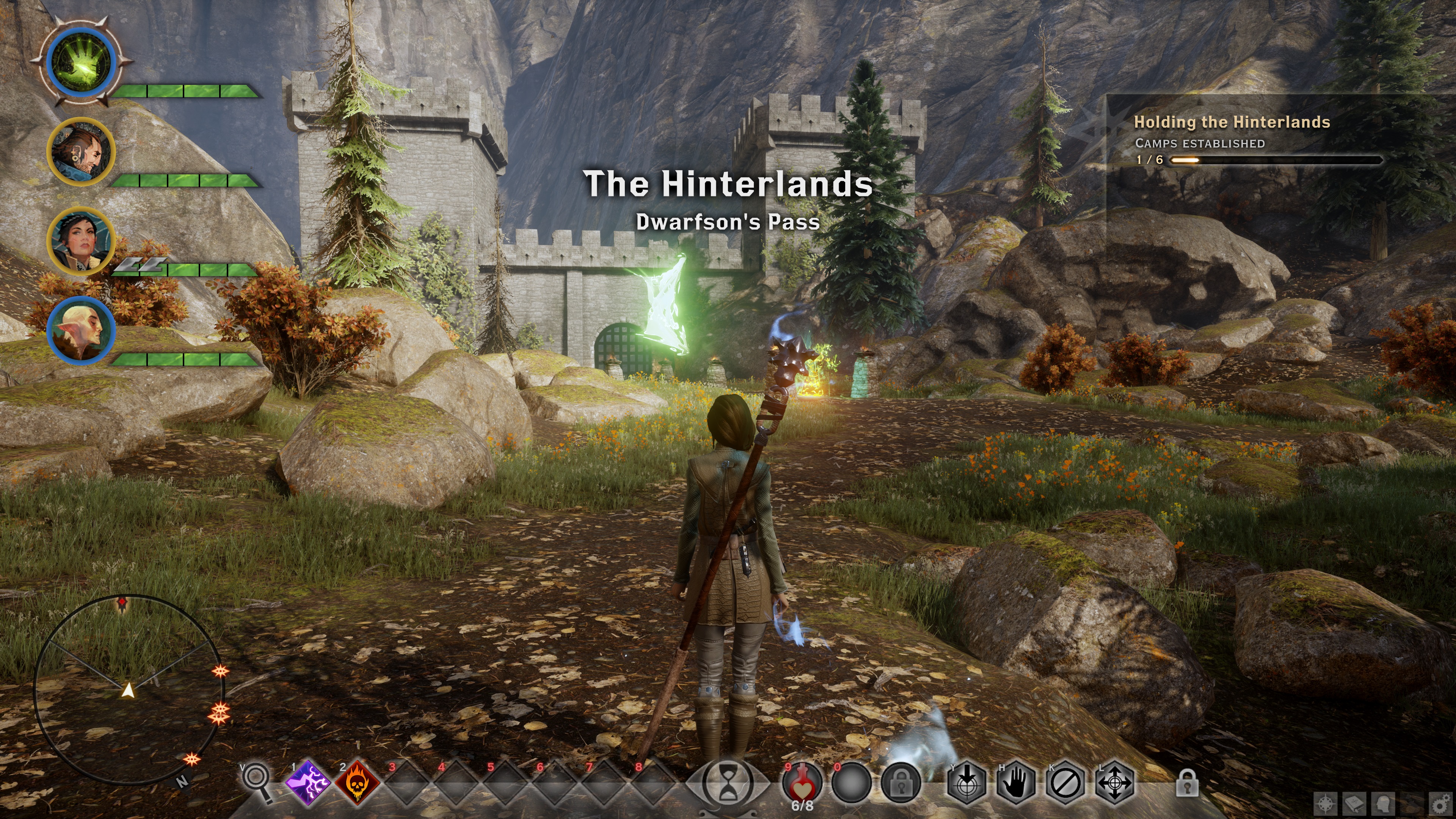  
A Timelord's Travel In Thedas | Alazander's Blog | Baldur's Gate II Redux | Community Contest | Creations of AmstradHero | Dark Sun Glare Blog | Ossian Studios | The Sanctum | RP Singh
|
 |
2016 :
Aug | Sep |
Nov |
Dec
2014 : Jan | Feb | Mar | Apr | May | June | July | Aug | Sep
2013 : Jan | Feb | Mar | Apr | May | June | July | Aug | Sep | Oct | Nov | Dec
2012 : Jan | Feb | Mar | Apr | May | June | July | Aug | Sep | Oct | Nov | Dec
2011 : Jan | Feb | Mar | Apr | May | June | July | Aug | Sep | Oct | Nov | Dec
2010 : Jan | Feb | Mar | Apr | May | June | July | Aug | Sep | Oct | Nov | Dec
2007 : Jan | Feb | Mar | Apr | May | June
2006 : Jan | Feb | Mar | Apr | May | June | Oct | Nov | Dec
2005 : Aug | Sep | Oct | Nov | Dec
9/11/16 -Sunday: LOOK AT THAT...
IT WORKED...
|
As you can see from the above GIF, I definitely was able to
get something done these past few
days. And luckly for me, they were more or less the things I
outlined in my last post as things I wanted to work on next.
TILE DATA CLASS
This class encapsulates all known data about a specific tile.
More specifically, it currently contains:
- Terrain Name
- Is Walkable
- Defense Modifier
- Dodge Modiifier
- Accuracy Modifier
- Movement Modifier
Mountains aren't walkable, the desert has a movement
modifier of -2, grass doesn't alter any of these attributes,
etc. You guys get the idea, not doing anything revolutionary
here.
So now, when I'm loading my TileMapData
class with the 2D array of tiles, instead of just passing a
range of 0-3 for each tile (which used to just represent which
graphic to show), it's now replaced with an instance of
TileData.
In fact, here's a rudimentary understanding of how
everything works together thus far. Maybe I'll get fancy and
start using real flow charts and whatnot:
- There is a data file that contains all the tilemap
information for a particular area of the game. For
simplicities sake, we'll call it
VeronaForest_1.json.
- TileMapDataLoader loads
VeronaForest_1.json, and begins to
parse each tile attribute.
- Each parsed out tile attribute will become an instance
of TileData.
- Each instance of TileData is
stored in an internal 2D array, which is contained within
a TileMapData class.
It should be noted that all of these clases are Engine
agnostic. They're simple C# classes that don't know anything
about how to render, draw, etc. They're just filled with data,
data that can be passed to any system. So while this is being
done in Unity, it could easily be
ported to something else.
But I am using Unity, so, to
continue to the pipeline:
- TileMap (Unity
class) has a referfence to
TileMapData, and can iterate over it in
order to draw the actual tile map. Now, being a
Unity class, it does have to know
about TileMapData. However, the
way things are split up, if I need to change how
everything is drawn, say, I'm moving from top down to
isometric, the only class that needs to know about that is
TileMap. TileMapData can stay as
it is.
TILE SELECTOR ICON
This was pretty easy, as it was more or
less implemented during
quill18's
tutorial. Unity
has a fairly easy to use event system with regards to
mouse movement, and it was pretty easy to override the
Update() function, which runs every
frame, and do the following:
-
Check the position of the mouse.
-
See which tile coordinate it is in.
-
Move the tile selector icon, which
is really just a flattened 3D cube, to said tile.
-
Make the movements snap into place
by moving a distance equal to the width/height of the
tile.
So yeah, nothing special here.
UNITY UI
Ah, Unity UI.
Released maybe 2 years ago, I think? It's supposed to
make rendering all sorts of UI easier, and give better
performance. Whereas with the old system, it was pretty much
all scripting based, this time around, you gave actual
gameobjects you can create within the editor. Once you create
a UI you are happy with, you can create a prefab of it, and
then use it anywhere in your game.
The biggest thing I dealt with was
how to utilize them. Sometimes, I don't
think people appreciate how much work goes into actually
designing a system that is robust, less prone to errors, and
highly performant.
In my case, I did a lot of research
into the pros and cons of dynamically loading the UI prefabs
when I need them (caching them, of course, once loaded), or
just including a reference to each one I need wherever it's
needed.
After a lot of soul searching, I am
going to go with the latter solution, and see how that pans
out. I'm think some sort of UI Manager/Controller is in my
future. Main issues with loading assets at runtime is that I'm
already going to be doing a lot of that as it is. So the less
strain I put on the system, the better.
In terms of getting the values to
change on the tile terrain details panel, that was pretty
easy. As I already have a rerference to that UI gameobject, in
the code where I move the tile selector icon around, I get a
reference to the TileData object
that represents the tile that is seletced. Then, I just grab
the important data, set some text values, and I'm good to go.
THOUGHTS ON PROTOTYPING IN
GENERAL
So in general, things are going quite
well. I technically had most of these things done days ago, I
just ended up getting pretty busy with work, and not having
time to write this blog. So if I take that into account, I'm
really doing good.
Also, I'm a firm believer that during
this prototyping phase, the "look" of things does not matter.
I know that most blogs want to show things off looking as good
as possible. However, with this
blog, I've always wanted it to be a catalog of true history.
No revisionists history here. I absolutely love going back to
old blog entries, to see how shitty my games have looked, and
then look at the final product. I also think it's good to show
people the real side of game
development, as much as I can. And that way of blogging isn't
going to change.
On the other hand, even though I'm
prototyping, from a coding perspective, I'm definitely
striving to make all the right decisions up front. Coding
standards, best practices, that sort of thing. Sure, I've been
a software engineer for 12 years, but when people say, "Oh,
picking up another language is just syntax", it goes deeper
than that. You must really learn the guts of the language if
you want to write some as complex as a game.
Performance is the first thing on my
mind in every decision I make. So even though I'm prototyping,
I'm still trying to keep things respectable :)
Till tomorrow...
|
9/6/16 -Tuesday: <INSERT DRAKE
VOICE> STARTING FROM THE BOTTOM.../p>
/div>
|
Ever since I started working on
Rose of Eternity games, while I have
definitely squeezed as much as I possibly could out of the
Aurora & Eclipse
engines, there were always limitations. There were so
many times were I was like, "Shit, if only the engine exposed
this functionality" or "Man, I wish
I could change the look of this character sheet UI".
On the other side of the coin, I was
given so much out the gate. Conversation editors, level/area
creation tools, scripting languages... And that's not even
counting all the stuff under the hood. Rendering, physics, and
who knows how many other systems. I never had to think about
it. I was able to just sit back and do what I do. Implement
combat systems, create semi-branching story lines, a little
level design, and tie it all up with a nice, shiny bow.
Now, I have to start from the bottom.
But where? That was one of the biggest lingering questions I
had in my mind over the past few months.
Well, being a turned based RPG, I
figured I would start out with implementing the map system
that the combat will take place on. After a lot of googling
around, I realized that what I wanted to implement was a
Tilemap system.
Now, one thing I knew from the jump was
that I didn't want to just integrate some existing asset
package that had a tilemap system in it. I knew going in that
I needed to implement it myself. I'm going to always need to
have 100% control over it. One thing I've learned over the
past 12 years, as both a game developer, and a software
engineer, is that sometimes putting your future in the hands
of other people doesn't always work out so well.
So with that said, I went about looking
for tutorials. And boy, did I hit the jackpot. There is this
guy named quill18
who has one hell of a
YouTube
channel where he does these in depth tutorials
on coding solutions for Unity (there
may be non-Unity stuff there too). The one that got me started
was his
Unity 3d: TileMaps series. All I can say
about it is it's a master class in how to do a video tutorial.
I've never been a fan of them, as
I'd normally rather written ones. What separates him from the
rest is his tone, his delivery, his knowledge, and the way he
explains things. I mean, look, some people got it, and some
people don't. He does. I could sit there and watch a tutorial
about some subject I don't care about, and be totally fine.
His voice simply captivates you, and you get sucked in. And at
the end, you will have learned a lot. In fact, I learned more
than just how to implement a Tilemap, as he was always
throwing in little tidbits here and there about the Unity
engine in general. It was a great experience, something I'll
always remember when I look back at the early days of the
development of this game.
So, with this newly gained knowledge,
and set about my task. It went... pretty smoothly. There were
really only 2 ways to create the tilemap. One was with using
Unity game objects, one per tile, which is pretty easy to
implement, but doesn't scale well once you're getting into
larger maps. The other way, which quill18
did most of this tutorial on, was implementing it uisng a
Unity mesh. Instead of all of these game objects with a
texture drawn on each one, I just use a single mesh that has a
single texture on it, and draw everything on it.
The actual math and components involved
in creating a mesh were all new to me, including learning
about quads, triangles (2 per quad), vetices, uv, normals,
etc. It was at this time that I knew I was in the big leagues.
The first thing I did was take a 4
sprite sprite atlas, and randomly populate the map with them.
That's essentially that garbage image you see at the top. The
sprite sheet (which was taken from the quill18
demo) includes water, grass, mountains, and
desert. See below:

So, I created a 50x25 Tilemap, and then
randomly fed it these sprites, which produced the following:

I also had to do some work to make sure
that every time a Tilemap was generated, the camera would
calculate the center of it, and move there. I have some work
to do with regards to the math and how some of the tiles are
chopped off on the edges, but in terms of generating my first
mesh based Tilemap, I was pretty happy. But I needed to do
more... I started thinking about how I wanted to actually
store this data.
As stated above, I want to create my
own Tilemap system, for the reasons I mentioned above, and for
other reasons I cannot get into at the moment. But another
reason I want to create my own system is because of the way I
want to serialize/deserialize them. Or, save/load, if you
will.
For every map in this game, I want to
dynamically load it from a file. Let's say the format is, oh,
I don't know... JSON. There will be a directory of JSON files
that contain all the data needed to generate the map. The
positiion of the tile, the type of tile, the sprite associated
to it, and all sorts of other things I may add down the road.
Is the tile walkable? Is it destructible? Is there some
benefit from standing on this tile, versus another? Maybe you
walk slower in the desert. Maybe your ranged accuracy goes
down in the forest. Just spit balling ideas here. And I
realize as I'm typing this that I sound very much like
Sean Murray and his now infamous
interviews about No Man's Sky.
Because I'm neither confirming nor denying these elements will
be in the game, I'm just throwing things out there. So yeah,
please don't hold me to anything I say here, because anything
can (and will) change at any time. Such is game development.
Anyway, knowing that I needed to load
this data, I knew I needed a new class, something I ended up
calling TileMapDataLoader. Now, I
didn't want to go too crazy, so I actually created a CSV file,
which each value ranging from 0-3, corresponding to the sprite
atlas. Then, by hand, I set all the numbers in a fashion to at
least make something resembling a less shittier, random
tilemap. The CSV file would end up looking like this:
|
3 |
3 |
3 |
3 |
3 |
3 |
3 |
3 |
3 |
3 |
3 |
3 |
3 |
3 |
3 |
3 |
3 |
3 |
3 |
3 |
|
3 |
3 |
3 |
3 |
3 |
3 |
3 |
3 |
1 |
1 |
1 |
1 |
1 |
1 |
1 |
1 |
1 |
1 |
1 |
1 |
|
3 |
3 |
3 |
3 |
3 |
3 |
3 |
1 |
1 |
1 |
1 |
1 |
1 |
1 |
1 |
1 |
1 |
1 |
0 |
0 |
|
3 |
3 |
3 |
3 |
3 |
3 |
3 |
1 |
1 |
1 |
1 |
1 |
1 |
1 |
1 |
1 |
1 |
0 |
0 |
0 |
|
3 |
3 |
3 |
3 |
3 |
0 |
0 |
0 |
0 |
0 |
0 |
0 |
0 |
0 |
0 |
0 |
0 |
0 |
0 |
2 |
|
3 |
3 |
3 |
3 |
0 |
0 |
0 |
0 |
0 |
0 |
0 |
0 |
0 |
0 |
0 |
0 |
0 |
0 |
2 |
2 |
|
3 |
3 |
3 |
0 |
0 |
0 |
1 |
1 |
1 |
1 |
1 |
1 |
1 |
1 |
1 |
1 |
1 |
2 |
2 |
2 |
|
0 |
0 |
0 |
0 |
0 |
1 |
1 |
1 |
1 |
1 |
1 |
1 |
1 |
1 |
1 |
1 |
2 |
2 |
2 |
2 |
|
0 |
0 |
0 |
0 |
0 |
1 |
1 |
1 |
1 |
1 |
1 |
1 |
1 |
1 |
2 |
2 |
2 |
2 |
2 |
2 |
|
0 |
0 |
0 |
0 |
0 |
3 |
3 |
3 |
3 |
3 |
3 |
3 |
3 |
2 |
2 |
2 |
2 |
2 |
2 |
2 |
And the Tilemap that was produced
looked like this:

So, going from south to north, we
have some mountains, some grassy plains in front of them, a
river, followed by more grassy plains, smaller mountain
range, and then the beginning of the sahara desert (or
whatever).
Those looking closely at the CSV and
the Tilemap will know that everything is flipped upside
down. It's because in Unity, the 0,0 coordinate starts at
the bottom left, but the way I'm reading in the CSV file,
the 0,0 coordinate is actually at the top left. But besides
that, everything looked good.
So all in all, it's been a very
productive few days. I've:
-
Learned a shit ton about Tilemaps
and meshes
-
Implemetned said mesh based
Tilemap
-
Created a simple CSV data loader
so I could at least make the maps look like something
other than static on an old ass TV
Next on the agenda? I don't know,
actually... It's all going to depend on how much time I
have. I'd like to expand on my TileData
class (well, I haven't created it, but that is what
it'll probably be called), and start adding some attributes
to it, like the aforementioned "is this walkable", or "does
this slow you down".
I would also like to get a tile
selection icon in there, something I can scroll around in
order to see the various tile statuses. In fact, shit, I
want to get scrolling in general going. You know, panning
around the map and whatnot.
Yeah, that sounds like a plan.
Heh, I was chatting with an old buddy
of mine who was helped with these projects since like 2006,
and I told him that I'm in the honeymoon stage of
development right now. Everything is fun. Bouncing around
from one cool idea to implement to another is great. But I
know all too well how it ends. So, I'm going to enjoy this
while it lasts:)
Till tomorrow...
|
9/2/16 -Thursday: A NEW
BEGINNING...
|
STATE OF THE UNION
Well, folks, it's been a long time
coming. It's finally time to officially talk about what's been
going on in this crazy mind of mine over the last 2+ years.
During the last year or so of the long
death march that was the development of Family &
Country, I started beginning to think about what
was next. Even though I was still working on a game, the bulk
of the work was already finished. It was more about dozens and
dozens (and dozens!) of play tests, bug reporting, bug fixing,
and the like. There was lots of work surrounding the marketing
campaign. I was working like a mad man trying to get in
contact with some generous voice actors, to fill the last
remaining spots in the game. I know that seems like a lot (it
is!), but I wasn't really doing any hard code development.
Since I was in a holding pattern for a lot of the time, I had
lots of time to think...
...And when I have lots of time to
think, ideas start to take shape.
The first thing I had to tackle was the
idea that I was done spending time doing the following 2
things:
-
Working on projects for other
people
-
Creating Rose of
Eternity games based off of existing RPG
engines (NWN Engine, Dragon Age Engine, etc.)
It was all good and fun doing this from
2004-2014. But I'm 36 years old now. I'm married. My daughter
is almost 2 years old. We just bought a house last fall. I
just don't have time to spend on the projects of others (i.e.
Ossian Studios), or on games where
the engine restricts what I can really do. I need to take
everything I've learned over that decade, and make something
wholly my own.
Enter, a new engine:

I was fortunate enough to get a little
experience with this engine while working with
Ossian Studios on The Shadow Sun.
In all honesty, it was one of the reasons I took
on the contract. I didn't care about the money, I cared about
the experience that I would be able to leverage one day. Today
is that day.
The next thing I had to address was how
to realistically create my next game. Most people who really
know me know that I've always had big dreams for this game
franchise. Way back in 1999, I knew what type of game I wanted
to make. Unfortunately, I'm not there yet, and it would be
foolish for me to think I can attempt to create a AAA title,
in the vein of Dragon Age: Inquisition
and The Witcher 3. It's just
not possible.
I mean, can I really make
this with my current resources?

What about this?
-1.jpg)
Um, yeah, I think you know where I'm
going with this. I have to do what's within my means, and
realistically, making a tactical turn based RPG makes the most
sense, and for the following reasons:
-
From an engineering standpoint,
while still complex, it's still something that I believe I
can tackle well enough. This doesn't include art,
animations, music, etc., but those are things I can worry
about later. For now, it's all about prototyping all the
various systems of the game.
-
Rose of Eternity
has always been a game with multiple layers
of combat systems, like
Unison Abilities,
Last
Resorts,
Passive Abilities,
Bonds of Battle, etc. Said systems will
be a natural fit for this type of game. And since I
already have a large list of these implemented over 3
games, I'm already ahead of the game.
-
There is a market for these types
of games.
Arcadian Atlas raised 95K+ in funds from
kickstarter over the summer, for instance. And at the same
time, the market is not flooded with these types of games.
-
The story I intend on telling still
fits within the overarching narrative already seen in the
first 3 games. In fact, it expands the hell out of it,
game world/lore wise.
So that's it, folks. The next game I
intend on making will be a tactical turn based RPG and I'm
using Unity to do it. These last 2
years have been fun, but now it's time to get back to doing
what I do.
Till tomorrow...
|
|
Website contents copyright (c) 2006 by Leonard Bedner |
|